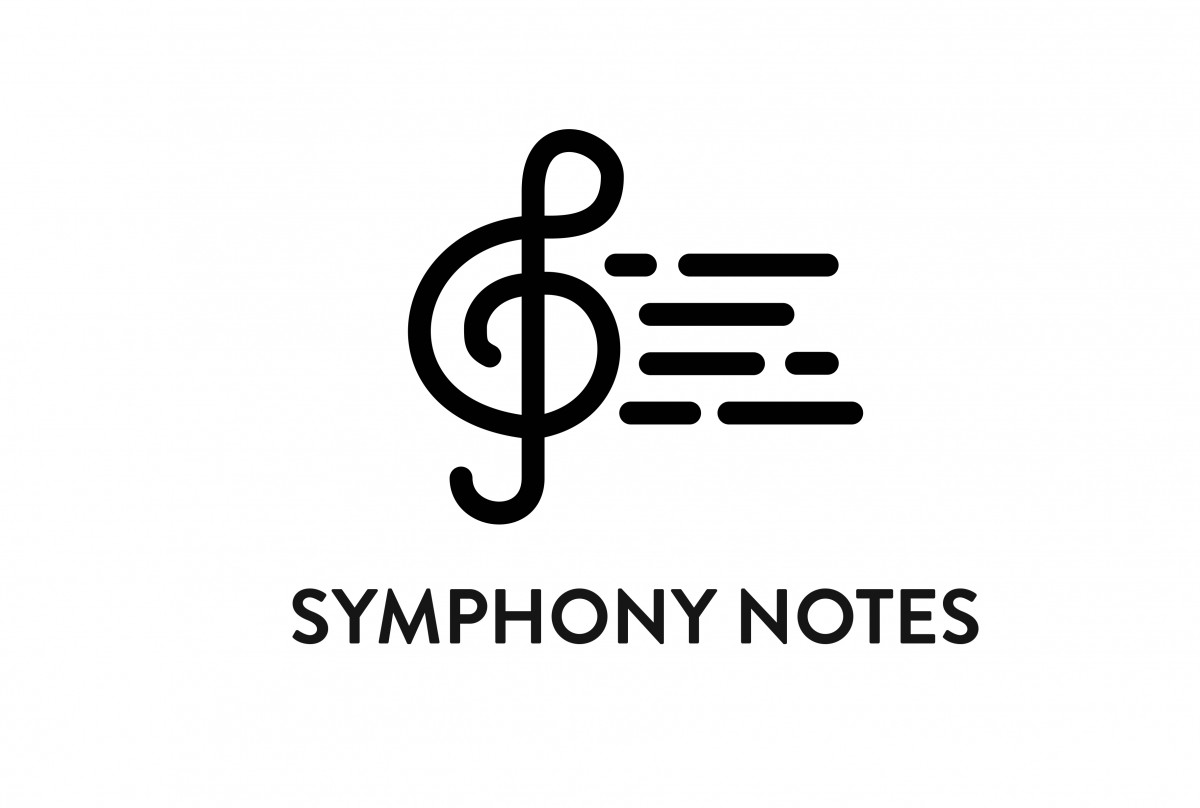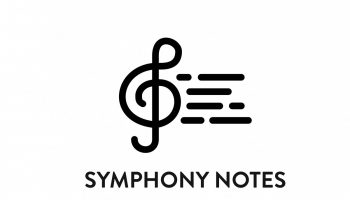Essay No. 1 for Orchestra, op. 12
Samuel Barber
Samuel Barber was born in West Chester, Pennsylvania, on March 9, 1910, and died in New York City on Jan. 23, 1981. One of the most honored and frequently performed of American composers, he contributed significantly to the repertories of opera, choral, song, solo piano, chamber and symphonic music. His tonal idiom and intense lyricism continue to endear him to audiences. His Adagio for Strings (1936, originally the second movement of his string quartet) has become the popular choice when America wishes to give musical voice to its public mourning. The First Essay for Orchestra was composed from 1937 to 1938 at the request of the great Italian conductor, Arturo Toscanini, and received its first performance along with the Adagio for Strings on Nov. 5, 1938, in New York City with Toscanini conducting the NBC Symphony Orchestra. The eight-minute- long work is dedicated “To C.E.” The score calls for two flutes, two oboes, two clarinets, two bassoons, four horns, three trumpets, three trombones and tuba, timpani, piano and strings.
When interviewed in 1971 about his music, Barber said that “when I write an abstract piano sonata or a concerto, I write what I feel. I’m not a self-conscious composer. … It is said that I have no style at all but that doesn’t matter. I just go on doing, as they say, my thing. I believe this takes a certain courage.”
In the challenging years of the 20th century when a tonal idiom in serious music fought to hold its own against the tide of atonality, serialism and abstract objectivity, such a self-justification may have been necessary. In present day, it would seem, the need for such an apologia has passed. Barber’s music continues to hold its place — which grows more honored as the years pass — in the repertory of the concert world. His Adagio for Strings has even crossed that boundary, making its way into the consciousness of popular culture.
If Barber’s most significant contributions reside in the vocal repertory, this is understandable as he was the nephew of a singer (Louise Homer) and received training in singing, along with piano and composition, at the Curtis Institute of Music in Philadelphia. But this lyrical gift found its way time and time again in his instrumental music. The Essay No. 1 for Orchestra, op. 12 (1937-1938), is no exception.
The Italian maestro Toscanini consulted Artur Rodzinski in the summer of 1937 about finding a piece by an American composer to be performed during the first season of the NBC Symphony Orchestra. Rodzinski suggested that Barber be contacted. Upon receiving the news, Barber immediately set about writing his new work, calling it Essay for Orchestra and sending it for Toscanini’s approval. When Barber did not receive a reply, he was understandably disappointed.
That next summer, Gian-Carlo Menotti visited Toscanini at his summer home on Lake Maggiore without Barber joining him, as he thought that his essay had been rejected. Toscanini assured Menotti that he not only planned to perform it, but was going to pair it with the Adagio for Strings on the same concert. Both works became immediately popular, although the essay’s success paled in comparison to that of the adagio.
The short work begins with a melancholy theme played by the violas and which is taken up by the rest of the orchestra, building to a climax. The next section is quicker and lighter in spirit, with the opening theme appearing in the background at first but soon making its way to the foreground. The music soon subsides, recalling its opening elegiac mood. Barber was to pen two further Essays for Orchestra, in 1942 and 1978 respectively.
Sinfonia Concertante in E-flat Major for Violin, Viola, and Orchestra, K. 364 (320d)
Wolfgang Amadeus Mozart
Wolfgang Amadeus Mozart was born Jan. 27, 1756, in Salzburg. He died on Dec. 5, 1791, in Vienna. The Sinfonia Concertante, K. 364 (320d) was composed in 1779. The “K” number used for Mozart’s works refers to the name Ludwig Ritter von Köchel, who first issued the Chronological-thematic Catalogue of the Complete Works of Wolfgang Amadé Mozart in 1862. The Köchel catalogue has been updated and revised many times to keep pace with musicological revelations, hence the revised number, 320d. The scoring calls for the two solo instruments, two oboes, two horns and strings (including divisi parts for the violas).
The New Grove Dictionary of Music and Musicians defines the sinfonia concertante (or symphonie concertante) as a “concert genre of the late 18th and early 19th centuries for solo instruments — usually two, three or four, but on occasion as many as seven or even nine — with orchestra. The term implies ‘symphony with important and extended solo parts,’ but the form is closer to concerto than symphony.” These works are generally lighter and shorter than most symphonies or concertos, and they were especially popular in Paris until circa 1830. Mozart, who had visited the French capital, tried his hand at the genre in the form of a Concerto for Four Winds, K. 297b, composed in Paris in 1778. His Concerto for Flute and Harp, K. 297c, also falls into this category, as does his Concerto for Two Pianos, K. 316a, composed in the next year.
Mozart’s father, Leopold, was not only noted as a violinist who trained his son on this instrument, but also as one of the leading pedagogues, having published a famous treatise on playing the violin (Versuch einer gründlichen Violinschule) in 1756. Wolfgang went on to write several violin concertos (Nos. 3-5 being the most popular) as well as a Concertone for Two Violins (K. 187e). But as a performer of chamber music, he preferred to play the viola part.
Further evidence of his love for the violin’s larger and deeper-voiced cousin may be found in his six string quintets, all of which feature two violas. Violists, of course, are indebted to Mozart for enriching their repertory with these works, but also are grateful for the Sinfonia Concertante for Violin and Viola, K. 320d, heard on this program.
We have no information as to for whom Mozart penned this sublime work, nor do we know when it was first performed. Mozart understood that the acoustical properties of the viola did not hold up as equal to that of the violin, as an acoustically perfect viola should be one-half the size of the cello (i.e., too large to fit under the chin and too small to be held between the legs).
To equalize the power, Mozart wrote the viola part in D major (i.e., one half step lower than the violin part), requiring that the instrument’s strings be tuned one half step higher — a technique known as scordatura. This solution was advantageous insofar as the higher tension on the strings gave the instrument an enhanced ability to project, as well as allowing the use of the brighter sound of open strings (the keys of E-flat major and C minor — that of the second movement — call for three flats, thus reducing the opportunity to use two of the instruments’ open strings).
The work is in three movements. The opening Allegro maestoso begins with a vigorous and exciting orchestral introduction, at the end of which the soloists join in with a sublime new idea played in octaves. The movement proceeds with a series of delightful dialogues between the soloists. As one might anticipate, the traditional cadenza near the movement’s end needed to be written out by the composer, as opposed to one that in Mozart’s day would have been improvised by a soloist in a concerto for one instrument.
The emotional centerpiece of the work is the central Andante — a deeply expressive duet filled with the most profound emotions one finds in some of Mozart’s operas, such as Pamina’s lament in Act 2 of Die Zauberflöte. By contrast, the Presto finale is light as a feather, filled with fun and virtuoso passagework. Each instrument is given the chance to take the lead in its give-and-take conversations, leading at the end to a flourish of upward- climbing arpeggios for each instrument.
Symphony No. 4 in B-flat Major, Op. 60
Ludwig van Beethoven
Ludwig van Beethoven was born Dec. 15 or 16, 1770, in Bonn. He died March 26, 1827, in Vienna. His Symphony No. 4 was first performed in March 1807 at the Viennese palace of the composer’s patron, Prince Lobkowitz. It is scored for flute, two oboes, two clarinets, two bassoons, two horns, two trumpets, timpani and strings.
Beethoven’s musical imagination kicked into high gear after the completion the “Eroica” symphony. The crisis of the “Heiligenstadt Testament” now behind him, the composer’s “new path” of composition was rife with new ideas. Beethoven has left us a rare verbal testimony of his renewed self confidence: “Just as you plunge yourself here (Vienna) into the whirlpool of society, so in spite of all social obstacles, it is possible for you to write operas. Your deafness shall be a secret no more, even where art is involved.”
Evidence from the composer’s sketchbooks from this period clearly indicates that many ideas were pressing soon after the 1805 premiere of the “Eroica,” including the early stages for what eventually would mature into a symphony in C minor (No. 5, the completion of which was delayed to 1808). But other works and matters needed more immediate attention — among them being the composer’s amorous involvement with the widowed Countess Josephine von Brunsvik, the completion and staging of the opera Leonore (later Fidelio), and an increasing threat of Viennese military occupation by the French army (Napoleon’s troops entered the city just days before Leonore’s premiere).
The period spanning the spring of 1806 to the end of 1808 became one of the most productive of Beethoven’s career. The year 1806 alone gave birth to the Piano Sonata in F minor, op. 57 (“Appassionata”), the Piano Concerto No. 4 in G major, op. 58, three String Quartets, op. 59 (“Razumovsky”), the Symphony No. 4, op. 60, and the Violin Concerto, op. 61.
Count Franz von Oppersdorff, the dedicatee of the fourth symphony, was one of those few wealthy Viennese aristocrats who continued to maintain his own orchestra (Hauskapelle). After hearing a performance by Oppersdorff’s orchestra of the second symphony, Beethoven agreed to dedicate a new one — originally he had the Fifth Symphony in mind — for the Silesian nobleman.
For reasons that are not entirely clear, Beethoven delayed work on the Fifth Symphony and turned instead to a new symphony in B-flat major, a project consumed the next several months. Curiously, the first performance of the fourth symphony (along with the fourth piano concerto and the overture to Heinrich Collin’s tragedy, Coriolan) took place in March 1807 not at Oppersdorff’s palace, however, but at that of Prince Lobkowitz. There is no surviving evidence to show why Oppersdorff’s orchestra did not perform the work.
An intriguing detail of the autograph and early performance material for the fourth symphony are indications of “Solo” and “Tutti” in the woodwind, brass and timpani parts. Jonathan Del Mar, the editor of a new edition of the Beethoven symphonies, speculates that these markings, while authentically Beethoven’s own, postdate the work’s composition and first performance. They may have been added for later performances of the work by larger orchestras in which the number of wind, brass and timpani players would have been doubled in order to compensate for a larger string section.
Despite Schumann’s famous characterization of the fourth symphony as a “slender Greek maiden between two Norse giants,” the work is filled with astonishing athleticism and innovation. Among its novel features is its striking harmonic vocabulary, the sophistication of which is revealed in the mysterious Adagio introduction to the first movement (surely Gustav Mahler had the spirit of this introduction in his ears as he penned the opening of his first symphony in the 1880s). The opening gesture of a sustained tonic note — B-flat — may well have been inspired by Haydn’s Symphony No. 102 (1794/5), composed in the same key.
As is the case with Haydn’s introduction, Beethoven’s introduction fairly explodes into a boisterous Allegro vivace that, despite its exuberance, never entirely forgets the harmonic clouds from its introduction. A felicitous example comes toward the end of the development section. Beethoven ingeniously scores a series of mysterious rolls on the kettledrum, marked pianissimo. The harmonic function of these soft B-flats is, at first, uncertain. The triumphal arrival of the recapitulation in the full orchestra, fortissimo, solves the mystery.
A sublime Adagio follows, whose persistent dotted rhythm combines with melodies of unparalleled lyricism. The third movement — a scherzo marked Allegro vivace — begins with a jaunty rhythmic conceit that belies its triple meter. The harmonic “cloud” from the first movement passes briefly over the hushed orchestra. The noble trio section is presented two times (the first time Beethoven does so in his symphonies), but the third hearing of the scherzo is truncated, by having (in Tovey’s words) the horns “blow the whole movement away.”
The finale, Allegro ma non troppo, is a comedic perpetual motion machine with unexpected loud outbursts and occasional returns of the harmonic “clouds.” As was the case in the second symphony, virtuosity abounds. Listen carefully to the principal bassoon, which is called upon to exhibit a dexterity of fingers and tongue unprecedented up to this time in symphonic music.
Musicologist David B. Levy is professor of music at Wake Forest University in Winston- Salem, North Carolina. He has also taught at the Eastman School of Music of the University of Rochester and the University of North Carolina School of the Arts. A Beethoven scholar, he founded the New Beethoven Research Group and has lectured widely throughout the United States and Europe. Levy will give a Pre-Concert Lecture at 6:45 p.m. tonight in the Hurlburt Church Sanctuary.





